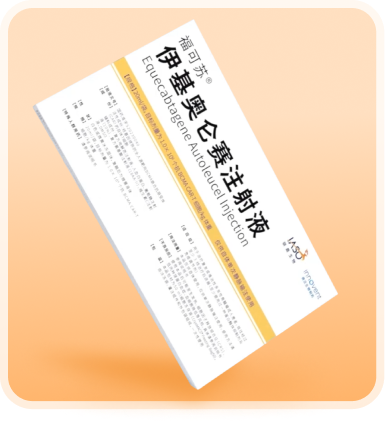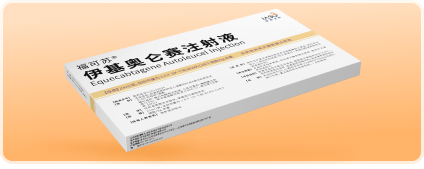Table of Contents
Professor Jin Jie and Professor Yang Min: Overcome Difficulties and Regain Vitality, Equecabtagene Treatment of an Ultra-High Risk R/R MM Patient Achieves CR Within One Month.

Multiple myeloma (MM) is a clonal disorder of plasma cell dysplasia, which is the second most common hematological malignancy 1. Although new drugs have been used frequently in recent years, MM patients have more therapeutic weapons and survival time has been improved, Multiple myeloma is still incurable, especially the overall survival of high-risk patients has not been improved2.
Chimeric antigen receptor T cell (CAR-T) therapy, which mobilizes the autoimmune system to recognize tumor cells again, is internationally recognized as an advanced therapy for the treatment of tumors, which is expected to bring hope for the cure of MM patients and become one of the possible ways to prolong the survival of high-risk patients 3.
In June 2023, a patient with ultra-high risk of R/R MM was admitted to the Department of Hematology, First Affiliated Hospital of Medical College, Zhejiang University. This patient was treated with autologous hematopoietic stem cell transplantation (ASCT) for early recurrence, and was treated with a series of new drugs such as Daratumumab, Carfilzomib and Pomalidomide. Clinical benefit cannot be sustained in the long term.
After comprehensive evaluation by the team of Professor Jin Jie and Professor Yang Min from the First Affiliated Hospital of Medical College of Zhejiang University, the new CAR-T treatment was selected for the patient, which was the first MM case treated with commercial BCMA CAR-T in Zhejiang Province, and the patient was overjoyed.
Recently, the patient’s condition has improved and discharged. In this issue, Professor Jin Jie and Professor Yang Min are invited to share the current situation of CAR-T cell therapy for R/R MM and the treatment process of this patient.
Part 1. CAR-T Therapy for R/R MM: Role and Application
Professor Jin Jie: Darkest Hour Brings Dawn, CAR-T Therapy Brings New Hope to R/R MM Patients
Yimaitong: CAR-T, as a new immunotherapy, has shown broad development prospects in the treatment of R/R MM. Could you please talk about what is CAR-T cell therapy and its application status in the field of R/R MM?
Professor Jin Jie: CAR-T cell therapy aims to transfer genetic material with specific antigen recognition domain and T cell activation signal into T cells through gene modification technology, so that T cells can be activated and proliferated directly by combining with specific antigens on the surface of tumor cells, thus playing a targeted role in killing tumor cells.
At present, the more widely used CAR-T therapy is mainly autologous CAR-T4, which extracts T cells from patients themselves for processing and modification. In the approved or ongoing clinical studies of CAR-T therapy for MM, there are many types of CAR-T related targets, among which B-cell maturation antigen (BCMA) is highly expressed in malignant plasma cells, but not in normal tissue cells (except plasma cells and some mature B cells) and hematopoietic stem/progenitor cells. This makes it an ideal target for the treatment of MM and widely used in clinical practice. Several studies have shown that BCMA CAR-T can further improve the remission rate and survival of R/R MM patients 5.
On 30 June 2023, the State Drug Administration of China (NMPA) officially approved the use of Equecabtagene Autoleucel for the treatment of adult patients with R/R MM, which has progressed after at least three lines of treatment (at least one PI and IMiD have been used), providing a new treatment option and hope for Chinese patients with R/R MM.
Yimaitong: In recent years, the Department of Hematology of the First Affiliated Hospital of Medical College of Zhejiang University has made great achievements in discipline construction and personnel training. Would you please share the characteristics of the Department of Hematology of the First Affiliated Hospital of Medical College of Zhejiang University in CAR-T treatment of MM patients?
Professor Jin Jie: The Department of Hematology of the First Affiliated Hospital of Medical College of Zhejiang University is a national key clinical specialty, with a special MM clinical sub-specialty, which can formulate a treatment strategy for MM patients integrating chemotherapy, transplantation, immunity and cell therapy.
Multiple myeloma has rich experience in clinical sub-specialty CAR-T treatment, and has close contact with other departments involved in MM diagnosis and treatment. Through cooperation with orthopaedics, Nephrology, cardiology, neurology, pathology, imaging, nuclear medicine and nursing teams, a multidisciplinary diagnosis and treatment (MDT) team6 has been formed. To develop a rigorous and standardized diagnosis and treatment program for MM patients, and strive to achieve the best therapeutic effect for each patient.
In the process of CAR-T treatment of MM patients, hematology medical staff take the needs of patients as the center, establish close communication and trust with patients, explain the treatment plan and possible adverse reactions in detail, and deal with adverse reactions in a timely and standardized manner, so as to help patients safely and smoothly through the whole treatment process.
Part 2. CAR-T Therapy Implementation and Outcomes
Professor Yang Min: Immediate effect, CAR-T is effective in the treatment of multiple recurrent MM patients.
Yimaitong: CAR-T cell therapy brings new treatment options for R/R MM patients. Equecabtagene is the first CAR-T product approved for the treatment of MM in China. You and your team have completed the first case of using Equecabtagene to treat MM patients in Zhejiang Province. Could you please share the treatment process of this patient?
Professor Yang Min:
The patient over 50 years old was diagnosed with MM.
The patient was a 50-year-old man who had left chest pain without obvious inducement more than 3 years ago. The local hospital examination suggested that the left rib fracture was not paid attention to and treated. The pain was aggravated and MM was diagnosed after local examination. Bortezomib, liposomal doxorubicin and dexamethasone (PAD regimen) were given at the beginning of the treatment. After 4 courses of treatment, melphalan 200 mg/m2 was given as pretreatment, and then autologous hematopoietic stem cell transplantation was performed. The local hospital assessed the curative effect as remission.
First recurrence of disease
One and a half years later, the patient went to the local hospital for treatment. After reexamination, the patient was given lenalidomide 25mg QD for maintenance treatment. After 17 days of medication, the platelet count decreased to 35×109/L. Why does thrombocytopenia appear so quickly? After improving the relevant examinations and evaluating the condition, it is considered to be caused by disease recurrence and myelofibrosis, which also brings greater difficulties to the follow-up treatment of patients.
Progression of the disease and poor response to multiple regimens
Later, the patient was admitted to our hospital because of the obvious aggravation of left chest pain, and was treated with daretuzumab + carfilzomib + dexamethasone (DKd regimen) after reexamination.
According to the results of free light chain of immunoglobulin, the drug regimens were changed for many times, including DKd regimen combined with pomalidomide, Kd regimen combined with carfilzomib and dexamethasone, and KPd regimen combined with carfilzomib and pomalidomide and dexamethasone. During this period, the patient developed novel coronavirus infection, bone marrow suppression, neutropenia and fever, and was given symptomatic treatment.
Make a prompt decision and finalize the plan-Iquiolenx treatment
The patient was diagnosed as ultra-high risk 2MM (DS stage III, ISS stage III) and relapsed early after ASCT. The high risk factors included p53 mutation, previous myelofibrosis, ECOG 3, less whole blood cells, high creatinine and nearly 80% of 17p-. After several rounds of treatment, the hematopoietic function of bone marrow decreased significantly.
Treatment is difficult and there are few options, and patients are already difficult to tolerate the conditioning regimen of retransplantation, and secondary transplantation may face the risk of serious transplant-related complications and even death. It is considered that CAR-T has become one of the most promising regimens at present, and CAR-T cell therapy can significantly improve the remission rate of R/R MM and improve the survival of patients.
Thrilling collection process
In July 2023, a total of 100ml of peripheral blood cells were collected, during which the patient’s platelets continued to be low to single digits, which brought great difficulties to the collection of peripheral blood cells. After a long period of communication and understanding with the patient’s family, the peripheral blood cell collection was completed by synchronous platelet transfusion, and the blood samples were transported to the factory through the cold chain on the same day to start the production process of CAR-T cells.
The patient developed increased creatinine and urea, and was considered to have progressive disease. The renal function was restored after treatment with Daretuzumab + Bortezomib + Dexamethasone (DVd regimen) and diuresis, but the free light chain was still as high as 1140 mg/L, so the patient was treated with fludarabine + cyclophosphamide (FC regimen) in August 2023. Under the professional preparation of commercial CAR-T factories, only 1.0×109/L peripheral blood cells were still successfully prepared into CAR-T cells.
Rebirth and Rejuvenation — — Witness the Excellent Evaluation of Therapeutic Effect
Before reinfusion, fever caused by various reasons once affected the patient’s reinfusion plan. Under the active clinical treatment, the patient’s fever was well controlled, which won a good window period for CAR-T reinfusion. After evaluation in August, the patient was reinjected with 20ml CAR-T cells. After reinfusion, the proportion of CAR-T cells in CD3 + T cells gradually increased. Two weeks later, the proportion reached 33.8%.
Patients with insufficient bone marrow reserve and infection in the early stage of treatment were expected to have serious adverse reactions, but under effective clinical management, even in the case of poor hemogram, the body temperature was still well controlled, and the high-risk adverse reaction stage after CAR-T infusion was safely passed. After reinfusion of CAR-T cells, the creatinine of the patient was improved.
On the 21st day after reinfusion, the creatinine was 148 μmol/L, the proportion of CAR-T cells in CD3 + T cells was 24%, the free light chain was significantly reduced (3.1 mg/L), no abnormal plasma cells were found in the pathological examination, and the minimal residual disease (MRD) was negative after the second-generation sequencing.
It was indicated that CAR-T cell therapy was effective and no ≥ grade 3 cytokine release syndrome (CRS) and immune effector cell-associated neurotoxicity syndrome (ICANS) occurred. The patient was recently discharged in stable condition, at which time the patient was assessed to be MRD-negative on a complete remission (CR) basis.
Summary
This patient was an ultra-high risk MM patient, and the disease still progressed after multiple combination regimens before CAR-T treatment. According to the comprehensive evaluation of the patient’s condition, the new commercial BCMA CAR-T cell therapy (fourth line) was finally considered. This was the first MM patient in Zhejiang Province to receive commercial BCMA CAR-T therapy.
Patients with myelofibrosis, poor bone marrow function and organ dysfunction after early multi-line treatment, the choice of CAR-T treatment is full of challenges, however, under the standardized, reasonable and timely treatment of medical staff in our hospital, from CAR-T collection, preparation, bridging treatment of patients, to the safety management after transfusion, we have overcome a series of difficulties.
After 21 days of reinfusion, the free light chain was significantly decreased, MRD was negative, no abnormal plasma cells were found by pathological examination, and CRS and ICANS above grade 3 were not found, which verified the good efficacy and safety of the clinical trial for R/R MM patients. This case shows that for ultra-high-risk R/R MM patients, CAR-T therapy can still be carried out with reasonable and standardized clinical management according to the patient’s condition, which brings hope for the treatment of patients.
Overall, the excellent efficacy and safety of iquiolencel in the previous FUMANBA-1study 7 has laid a solid evidence base for the treatment of R/R MM patients in the third line and above, and the excellent performance of iquiolencel in the treatment of real world patients has once again increased our confidence in the clinical treatment of R/R MM patients.
References
References: [1] Du Wen, Wang Xiaoqing, Cheng Juan.Progress in the treatment of relapsed or refractory multiple myeloma by targeting BCMA CAR-T cells [J].Chinese Journal of Clinical Oncology, 2021,48 (16): 858-862.
Zhang EF, Yang L, Cai Z.Prognostic evaluation of multiple myeloma: current status, challenges and considerations [J].Chinese Journal of Internal Medicine, 2020,59 (7): 493-495.
Kang Y, Mei H, Hu Y.Current status and challenges of CAR-T cell therapy in hematologic malignancies [J].Chinese Journal of Clinical Oncology, 2023,50 (1): 49-54.
JIA QH, MA J, ZHang FT, et al.Research progress of CAR-T therapy for multiple myeloma [J].Medical Review, 2022,28 (6): 1108-1114.
LIU Jiahui, QIU Lugui, an Gang.Therapeutic progress of targeting B cell maturation antigen in multiple myeloma [J].Chin J Clin Oncol, 2022,49 (20): 1039-1046.
[6] Liu Peng, Li Jing, Xu Tianhong, et al. Multidisciplinary collaborative diagnosis and treatment model of multiple myeloma [J]. Journal of Clinical Hematology, 2021,34 (7): 454-457.
[7] Chunrui Li, et al.Blood (2022) 140 (Supplement 1): 7435–7436.
Related Article


